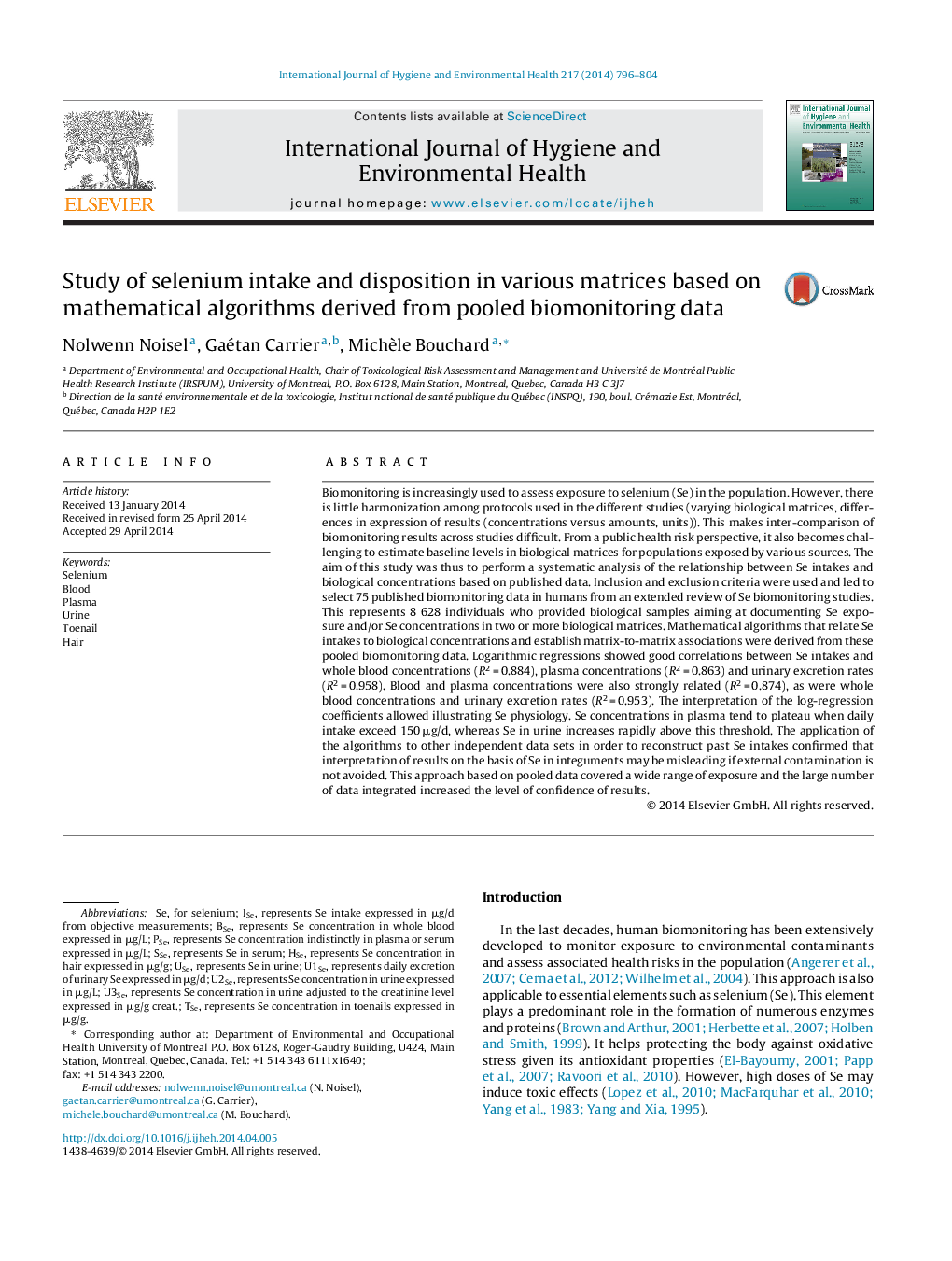| کد مقاله | کد نشریه | سال انتشار | مقاله انگلیسی | نسخه تمام متن |
|---|---|---|---|---|
| 2588454 | 1561895 | 2014 | 9 صفحه PDF | دانلود رایگان |
Biomonitoring is increasingly used to assess exposure to selenium (Se) in the population. However, there is little harmonization among protocols used in the different studies (varying biological matrices, differences in expression of results (concentrations versus amounts, units)). This makes inter-comparison of biomonitoring results across studies difficult. From a public health risk perspective, it also becomes challenging to estimate baseline levels in biological matrices for populations exposed by various sources. The aim of this study was thus to perform a systematic analysis of the relationship between Se intakes and biological concentrations based on published data. Inclusion and exclusion criteria were used and led to select 75 published biomonitoring data in humans from an extended review of Se biomonitoring studies. This represents 8 628 individuals who provided biological samples aiming at documenting Se exposure and/or Se concentrations in two or more biological matrices. Mathematical algorithms that relate Se intakes to biological concentrations and establish matrix-to-matrix associations were derived from these pooled biomonitoring data. Logarithmic regressions showed good correlations between Se intakes and whole blood concentrations (R2 = 0.884), plasma concentrations (R2 = 0.863) and urinary excretion rates (R2 = 0.958). Blood and plasma concentrations were also strongly related (R2 = 0.874), as were whole blood concentrations and urinary excretion rates (R2 = 0.953). The interpretation of the log-regression coefficients allowed illustrating Se physiology. Se concentrations in plasma tend to plateau when daily intake exceed 150 μg/d, whereas Se in urine increases rapidly above this threshold. The application of the algorithms to other independent data sets in order to reconstruct past Se intakes confirmed that interpretation of results on the basis of Se in integuments may be misleading if external contamination is not avoided. This approach based on pooled data covered a wide range of exposure and the large number of data integrated increased the level of confidence of results.
Journal: International Journal of Hygiene and Environmental Health - Volume 217, Issue 7, September 2014, Pages 796–804
